TEXT AND PHOTOGRAPHS BY PRISHA KAPUR
Translated from the Urdu by Dharamveer Sethi, Iqbal Nath Bakhshi, and Zubaria
Delhi, India
This is my great-grandfather’s journal. It is a hand-bound book with light brown paper, covered in a jute-like material, and text written with a dip pen in black and blue ink. He wrote in it over six decades, from the 1920s to the 1970s, and the book reflects that history: the spine bends easily, like it’s been opened and closed a hundred times. Some entries are bolder, written with a freshly filled pen, others lighter. Some text has clear articulation for each and every line and curve of a character, whereas others are slightly more rushed or haphazard.
The text itself speaks to a wide variety of topics. There are notes on the rent he used to pay (10 rupees a month in the 1920s), the birth of his first son in 1923, the gold necklace he bought for his son’s wedding in 1941 (639 rupees for 53 grams of 24-carat gold), and the same son’s salary of 45 rupees per month in the Oriental Beema (insurance) Company in 1945. He logged everything from the receipt number of the family’s first radio to how many kilos of cashews he purchased one day. There are entries about births, weddings, board exam scores, job promotions, new addresses, and train timings.
He wrote these entries “for remembrance, a brief description of how we live our lives”. But amidst all the everydayness, one of the most moving details is a small, consistent habit: he began every mention of his children with the word Aziz – “dear.” A subtle yet powerful note of affection, woven into the record of his days.
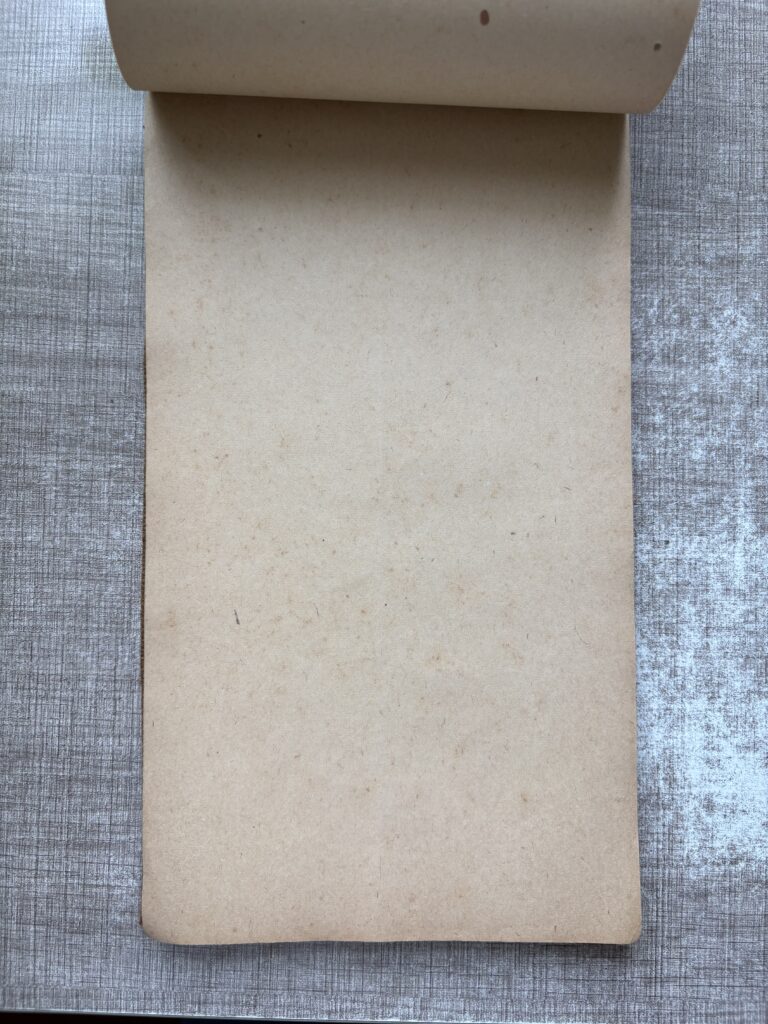
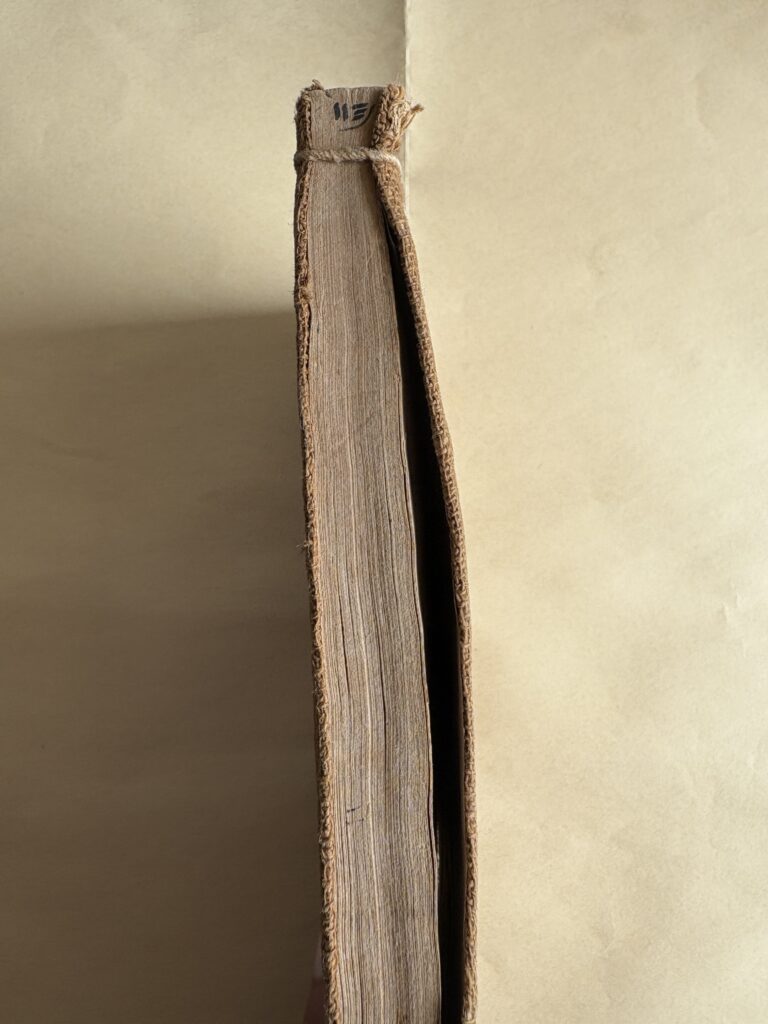
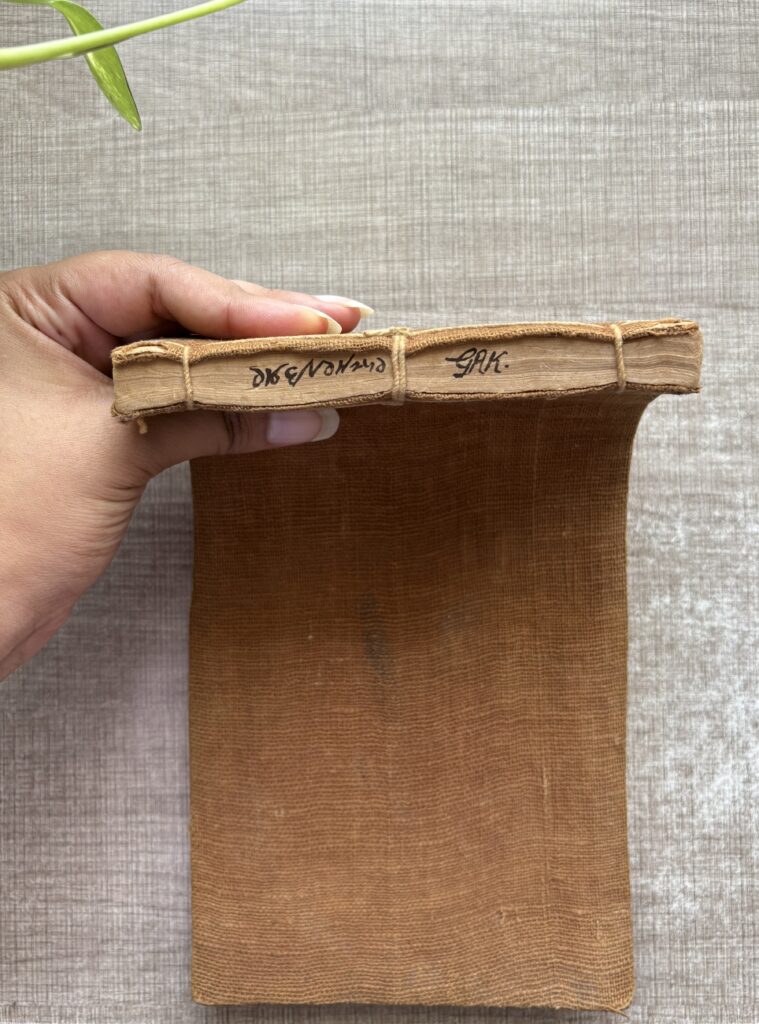
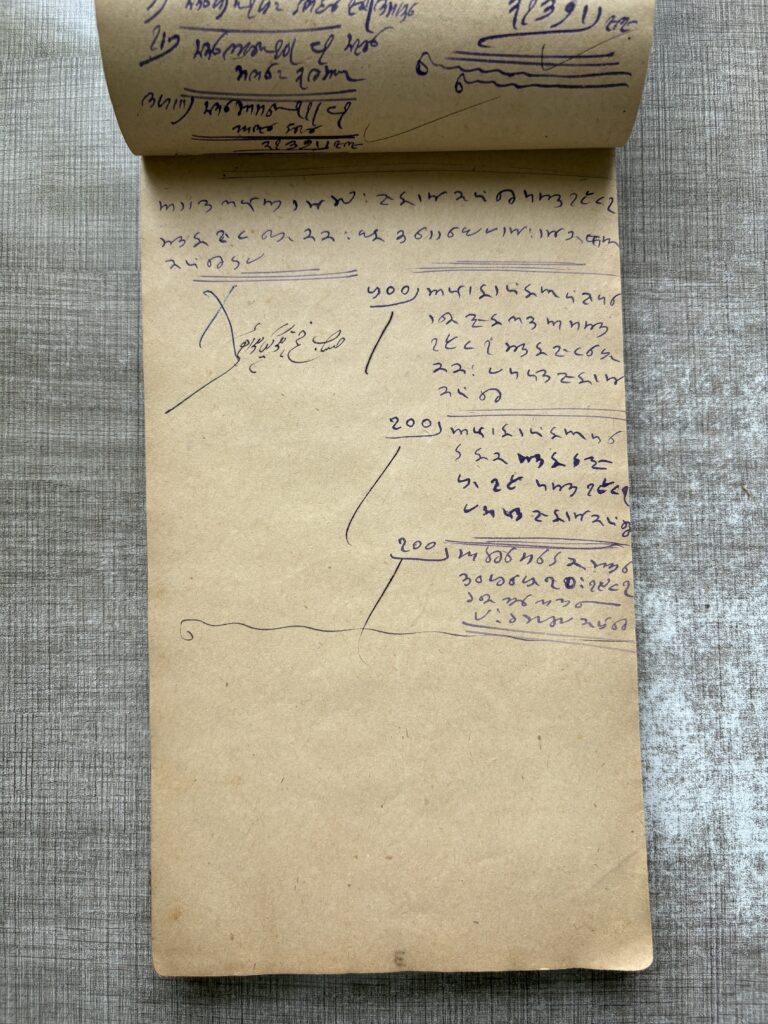
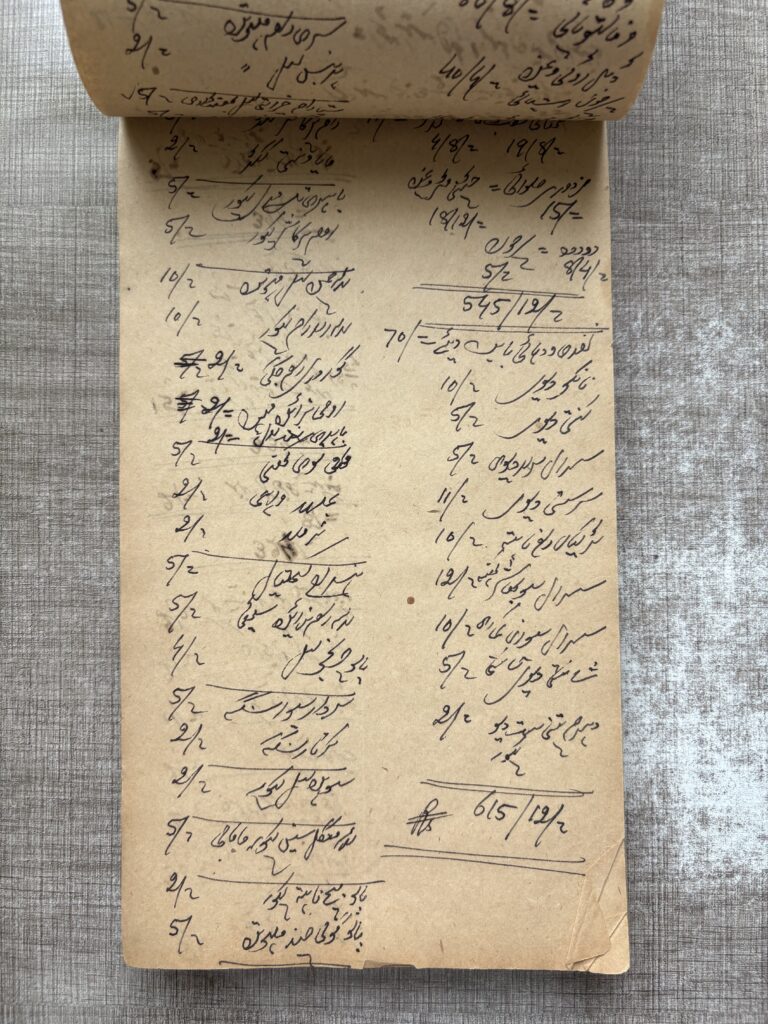
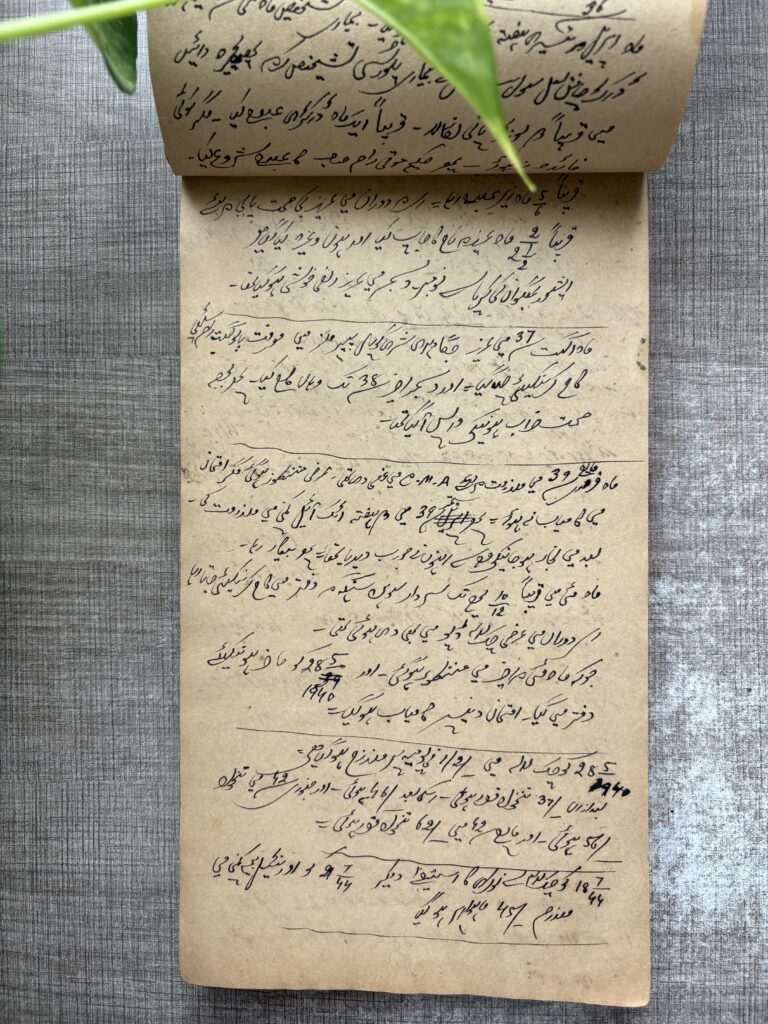
My father showed this to me in 2021 when I was back home from university during the COVID pandemic. He had dug it out from an old box, one of the few things that had survived over decades of moving. There were once many more. Other journals, old photos, objects, but they were lost or left behind as the family and future generations shifted. The house in Delhi where my family first settled after Partition was sold even before I was born. Since then, each child and grandchild has moved. Some across the country, others across continents.
Although I could not read the mix of Urdu and another mystery script the text was written in (I later discovered that it was a shorthand script called Landa popular in North India in the 20th century), I still decided to keep the journal with me. Something about it felt important—like this was our history. A record of a life that is so different from my own, but in some way, led to mine.
I spent most of my childhood away from Delhi and apart from my extended family and I’ve often felt disconnected from them. Like some people carry an accent, a rhythm in their voice, a certain inherent way of saying a word, a recurring theme in their childhood stories that clearly reveals where they’re from – I’ve always felt a little outside of that. I perhaps felt like learning more about my family was a way to bridge some of that distance. In previous family gatherings, when my parents’ and grandparents’ generation discussed old stories, I’d often (secretly) record those conversations. The places, the stories they talked about were so fascinating to me. Decoding this diary was another way to quench that fascination.
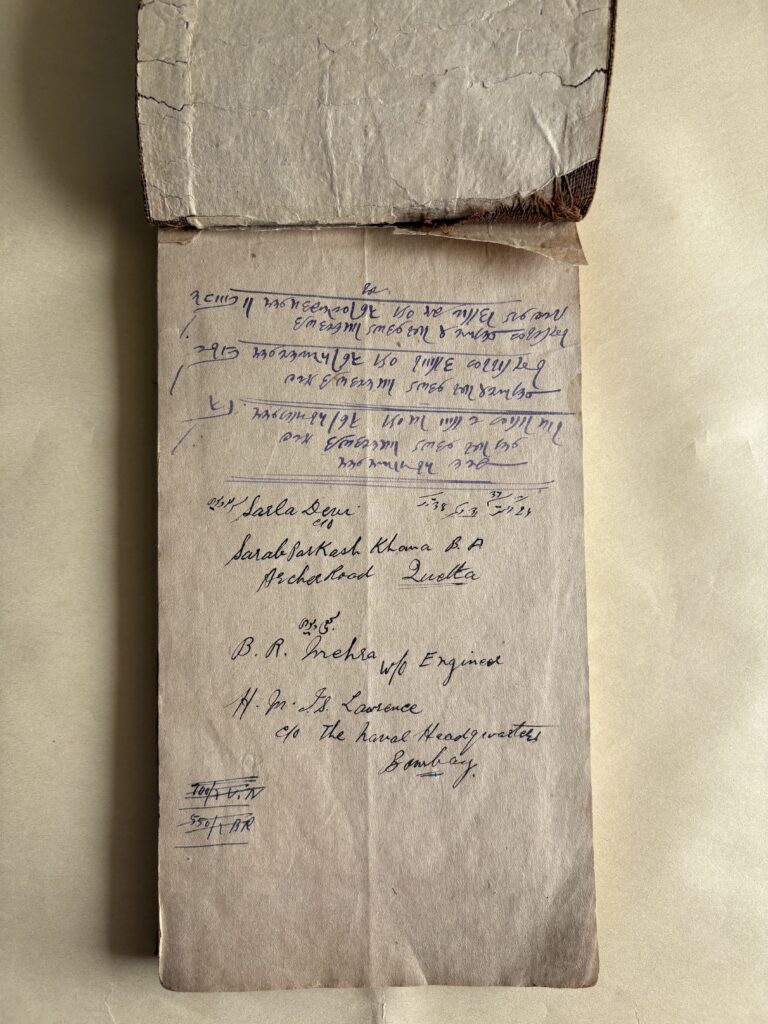
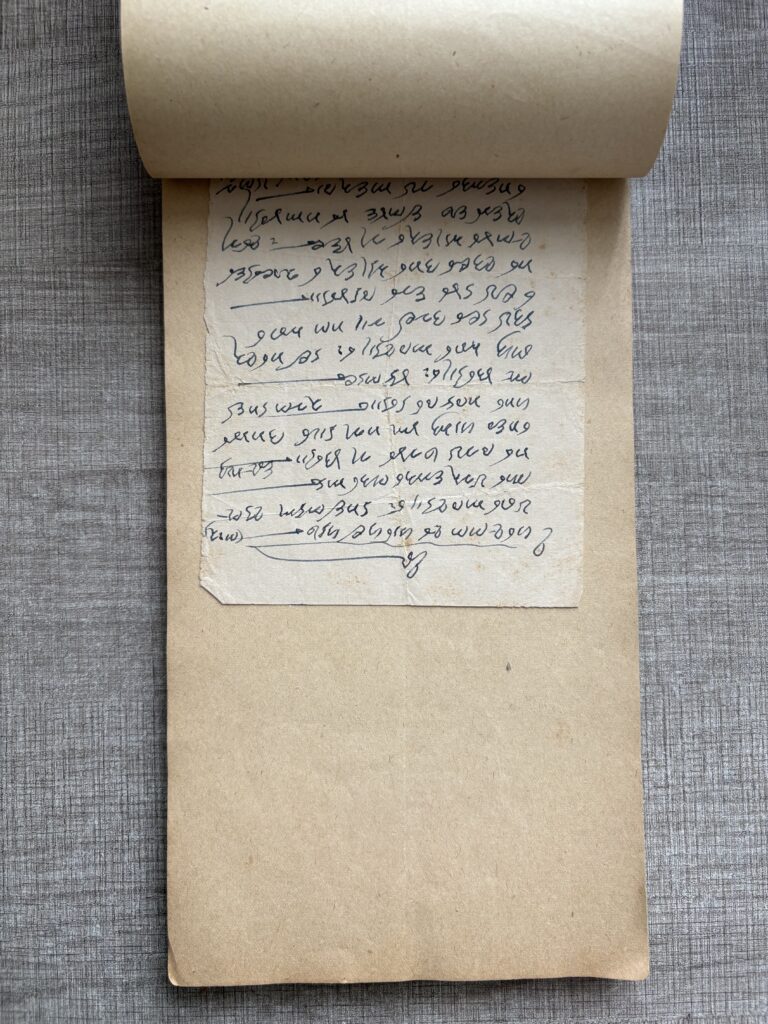
Over the course of several months, I took the help of multiple people to translate the Urdu text. The shorthand, though, remains something that no one has been able to decipher yet.
Perhaps what was most intriguing to me in the translation process was the intricacies in the language. The language in this journal is laced with references that feel rooted in a specific place and time. Hindu calendar months like Savan (which falls in July-August in the Gregorian calendar) and Magar (November-December) appear in the entries alongside Persian vocabulary. In some entries, the dates seemed to be jumping by more than 50 years, and no one could figure out why at first. It was eventually my grand-uncle, someone who was born in Peshawar, lived through Partition, reads Urdu, and understands Hindu traditions, who realized what was going on. The journal switches between the Gregorian calendar and the Vikram Samvat calendar, which runs 57 years ahead.
That small discovery opened up something bigger for me. This kind of language, a blend of Urdu script with Hindu systems and references, probably isn’t something we see much of anymore. It’s not just the dip pen script and archaic vocabulary, but rather a way of writing that feels frozen in time, one that no longer exists.
This language belonged to a world that existed before Partition. That world was disrupted, and as people migrated, adapted to their new landscapes and adopted those languages in their everyday, this particular combination didn’t evolve or grow alongside them. The result? Within just three generations, members of the same family are unable to comprehend the language their ancestor once spoke, wrote, and thought in. I wonder how many families across India (or even the world) this holds true for.
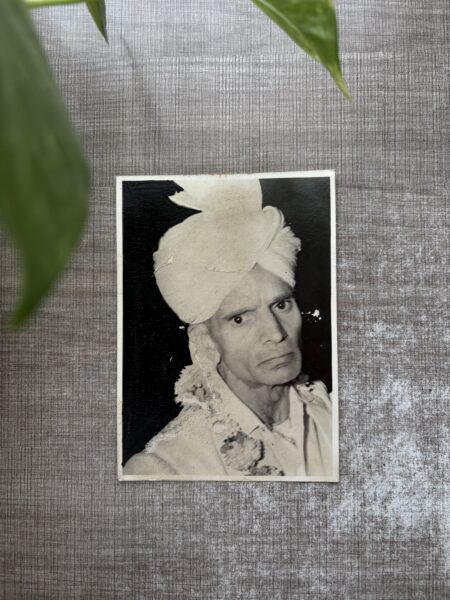
What strikes me is how this text today would today be read as a merging of distinct communities or identities. But for my great-grandfather’s generation, this was simply how people spoke and wrote. Urdu, at the time, was a shared medium across religious lines, a language of daily life and learning for both Hindus and Muslims in North India. The way identity has since hardened into neat categories of assigned language, religion, geography makes this text feel even more distant. It’s a reminder of how plural and entangled things once were, and how much has shifted in the span of just a few generations.
The diary is not entirely filled end to end. There is a big chunk of empty pages in the middle, after which the text starts again. Out of curiosity, one day I flipped to the very back of the diary and started reading it from there. On these last pages, I was able to decipher a date written in English: 1947.
The first of these entries is from March 1947, when riots broke out around my great-grandfather’s residence in Rawalpindi. The city shut down, businesses closed, and my great-grandfather and his family stayed inside their home. It’s not written in the diary, but I know from family stories that this was when some of his children left for India with other relatives.
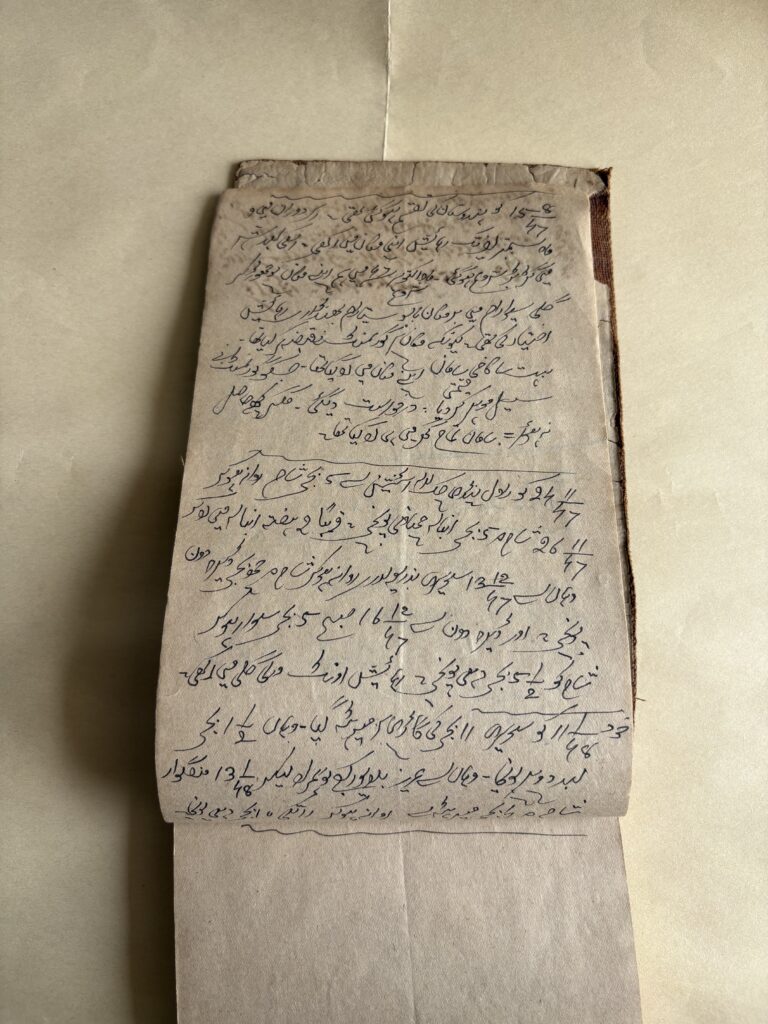
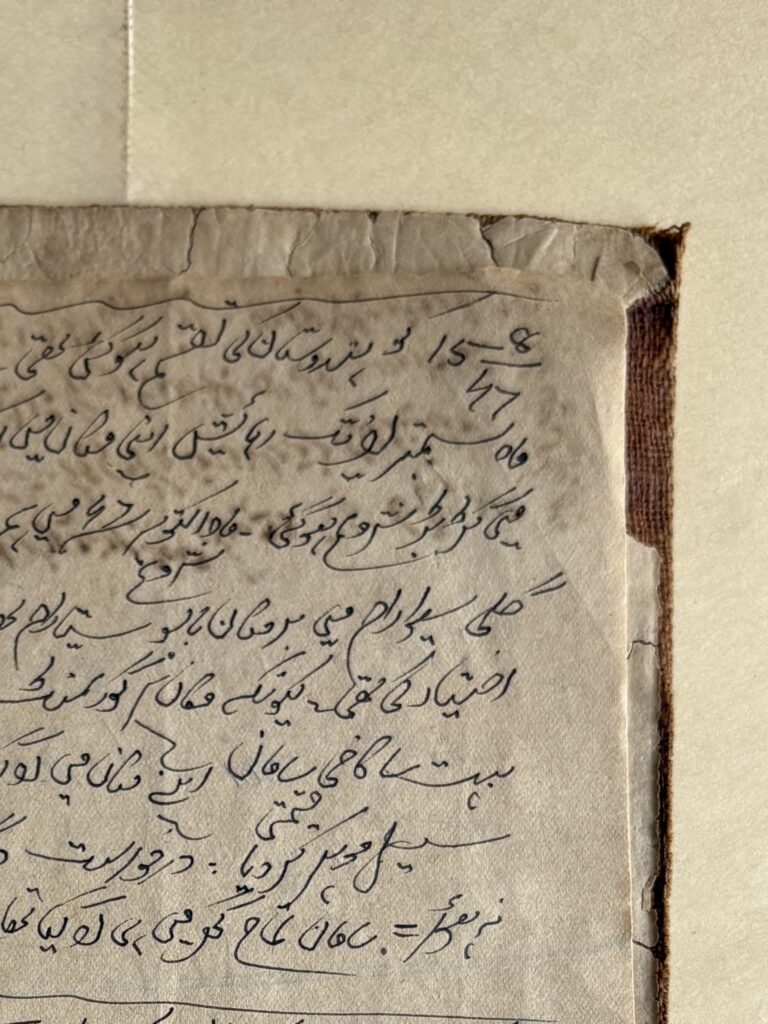
He very significantly notes the date of August 15th, 1947. What we know today as India’s independence day, he describes as the day India was separated. He uses the word taqsim – division in Urdu. I kept coming back to this word. It made me realise how differently this day must have felt for him. For my great-grandfather and probably many others in the Punjab and Bengal region of India, it was the separation of India and its largely-unknown implications that loomed larger than any sense of freedom.
By October, my great-grandfather and the rest of the family had to leave their home in Rawalpindi. They moved to another house nearby, but weren’t allowed to return to their original home, which was sealed by the government with all their belongings inside – even after they filed a formal request.
He left for India along with his remaining children, including my grandfather, in November. From Chaklala Station in Rawalpindi, at 5 p.m. on the 24th of November, they boarded a train. They arrived in Ambala on the 26th, then made their way to other cities, finally reaching Delhi in December.
I’ve heard stories about Partition through family, books, and academic study throughout my life. But I never fully understood the pace of it. It always seemed both sudden and slow. This account helped me grasp that. Riots would erupt and shut cities down, but then things would open again. Life would resume, almost. Families left in pieces. Some went early. Some stayed behind, hoping they wouldn’t have to leave at all. There was fear and urgency, yes, but also hesitation. A quiet hope that they might not have to go. A need to hold on to what they could.
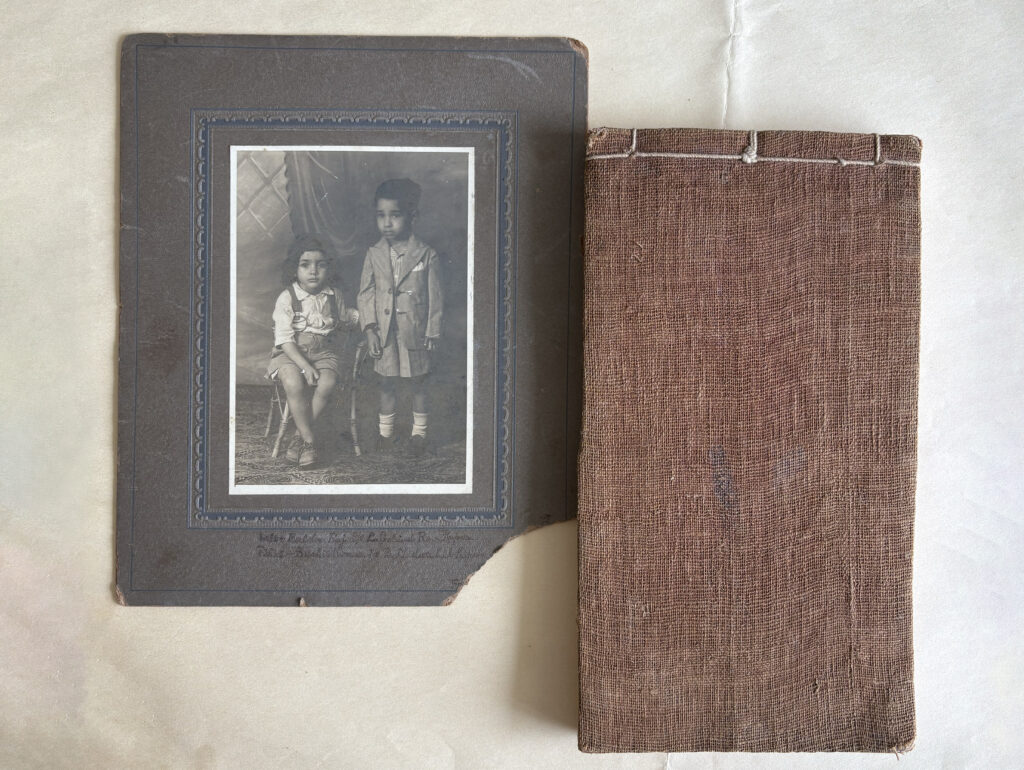
The author’s grandfather, Baldev Raj Kapur, son of Gobind Ram Kapur. Beside him sits his cousin, Sushil Kumar, son of Madan Lal Kapur. Based on the ages of the boys, the photo is assumed to have been taken in Rawalpindi.
I’ve also thought a lot about why these notes aren’t written in the chronological flow of the diary, but rather separately stored at the back of the book. I often flip to the back of my journals to write about a tangential thought, make a quick doodle or record a note irrelevant to the main flow of my book. It would not be appropriate to add to the pages as we go – either because it’s not related, or it’s too important to be missed among rapidly filling pages. Maybe Partition didn’t feel like just another part of life, it was a separate paradigm shift. Or maybe, in the middle of everything, these were just the pages he could haphazardly shift to to record his thoughts.
Either way, I’m glad this record exists. The diary isn’t emotional in the way I might have expected – there are no confessions or reflections, it is a record for record’s sake. But through its careful details, it quietly preserves a world, a language, and a rhythm of life that no longer exists. For that, I am grateful.

How very intriguing ! I also have reminiscences from my Grandfathers writing that I am trying to put together . These narratives are so relevant in keeping alive personal histories that reflect social mores which are fast receding , fading from consciousness .
This is beautiful! Even my Naana used to write in Urdu. Will try to get them translated too!
This is beautiful. thank you for sharing it with us!